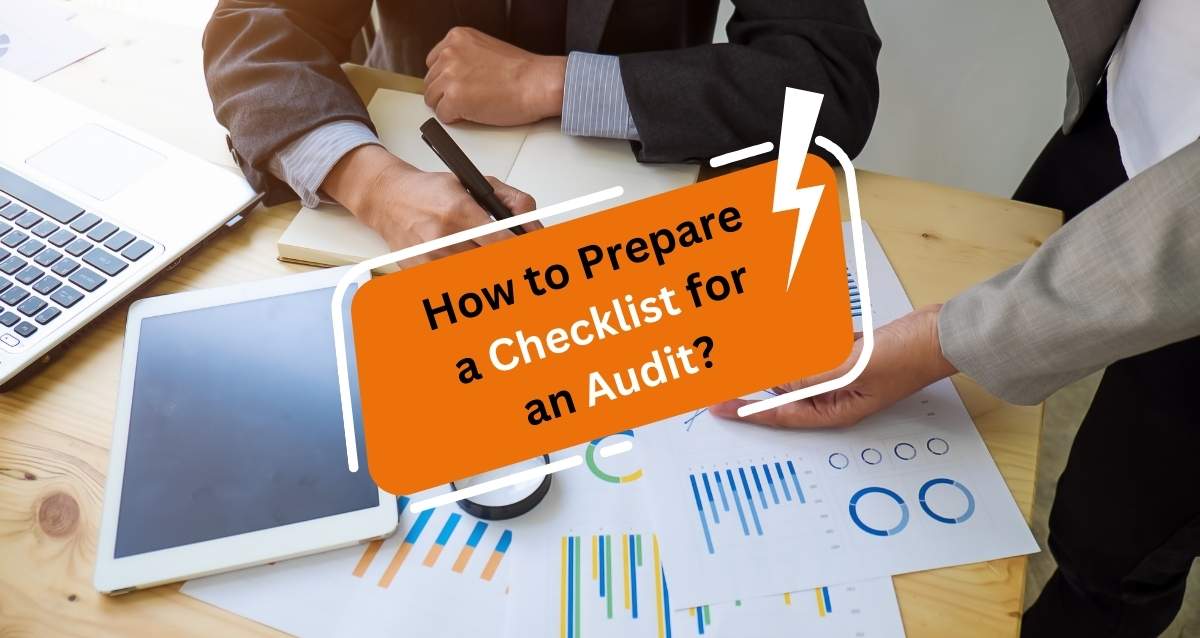Preparing For An Audit – A Checklist for Entities
Preparation for an audit can be considered a very overwhelming task for many entities, especially SMEs. The answer to this task is to follow a structured approach for the audit. The following blog discusses the checklist which ensures that the structured approach is used and the entity is ready for the audit, leading to fewer disruptions.
Step 1: Scope of the audit
The first and most essential part of the checklist is to understand the scope of the audit. This includes determining the type of audit being conducted – whether it is an internal audit, external audit, VAT audit or operational audit. The audit engagement letter needs to be analysed to understand the expectations of the auditors, the timeline of the audit and the deliverables of the audit. This also clarifies the purpose of the audit – whether it is to verify the financial data for risk management or for compliance purposes.

Step 2: Point of Contact
A point of contact in the form of a dedicated team member or a manager needs to be appointed by the entity. His role will be to coordinate with the auditors and ensure they receive all requirements. The entity should ensure that this team member or manager understands the entity’s business operations and financial processes so that he is in a position to answer the auditors' queries as and when they arise.
Step 3: Review Past Audit Reports
The entity needs to ensure that past audit reports are reviewed to check for any recurring issues or recommendations. They need to also ensure that any past findings by the auditors have been corrected by them and now they have ensured that such observations may not arise again.
Step 4: Organising Financial and Operational Records
Before the start of the audit, the auditor requests the trial balance for the year of the audit and lists down his requirements. This is then sent to the entity or the point of contact to assist in preparation for the audit. The entity or the manager needs to ensure that the financial documents – trial balance, ledgers, etc., operational records – contracts, leases, tax filings, etc. and supporting documents requested by the auditor are readily made available to him.
Step 5: Ensure Internal Controls are Documented
The entity should have its internal controls documented. This helps them provide the auditor with information about the key processes like approvals, reconciliations and segregation of duties. It also demonstrates compliance with their internal policies and regulatory requirements.
Step 6: Conduct a Pre-Audit Review
A pre-audit review is a process by which the entity ensures that they are ready for the audit by performing an internal check on the financial records and processes, reconciling accounts to ensure they are accurate and ensuring supporting documents are available for all major transactions. This step is critical - if done it would ensure the auditor can carry out the audit process smoothly.
Step 7: Communicate with Staff
The entity needs to inform its staff about the audit and their roles in providing the information to the auditors as and when requested by them. A timeline for the submission of documents to the auditor can be provided to the staff to ensure they are ready with the documentation and it is provided as per the timeline.

Step 8: Prepare a Workplace for the Auditor
The entity needs to ensure that they assign a designated space for the auditor to work on site. They should have access to their resources like – wifi, printers and key personnel.
Step 9: Anticipate Auditor Questions
The staff should be prepared to explain unusual transactions, policy changes or significant variances on comparison with past records. They should also be prepared to discuss the internal control framework of the entity and its effectiveness with the auditor.
Step 10: Compliance Testing
The entity should review its compliance with the various regulations in place – like labour law, VAT regulations, AML, etc. If they notice any compliance gaps these should be addressed proactively.
Step 11: Create an Audit Timeline
The entity needs to prepare an audit timeline which maps out the deadlines for document submission to auditors, auditor inquiries and feedback sessions. They also need to allocate time to ensure all findings are addressed before the start of the audit.
Step 12: Keep Communication Open
The entity needs to ensure open communication with the auditors by responding promptly to avoid delays. They should also maintain a collaborative and transparent approach during the audit.
Preparing for an audit is about organisation, transparency, and communication. By following this checklist, your business can approach audits with confidence, streamline the process, and demonstrate strong financial and operational management.
To learn more about How to Prepare a Checklist for an Audit?, book a free consultation with one of the Flyingcolour team advisors.
Disclaimer: The information provided in this blog is based on our understanding of current tax laws and regulations. It is intended for general informational purposes only and does not constitute professional tax advice, consultation, or representation. The author and publisher are not responsible for any errors or omissions, or for any actions taken based on the information contained in this blog.
